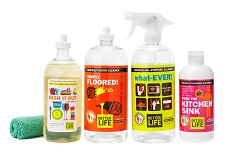
As a manufacturer of consumer or industrial products, labeling is an important element that can strongly influence your sales. With the right labels, your products will have the appearance, branding and information that attracts buyers. To make this happen, you need to be aware of the different types of product labels and what they mean.
Purpose of Product Labels
The main reason for there being various types of labels is that they each have unique benefits that make them suitable for certain purposes. Some are designed to maintain integrity in specific environments, while others convey an image of the brand to assist in promoting the product.
Since the label is the first detail customers see when coming across your product, it’s essential that you put enough thought into how it looks and the message it delivers. That said, let’s get into the different label types.
- Shrink Labels
Also known as shrink sleeve labels, these variants are typically constructed out of polymer (plastic) film. This material is wrapped around the whole container or packaging and heated so that it sticks to the surface. Shrink labels are ideal for displaying eye-catching visuals and are highly durable, making them great for refrigerated goods such as beverages.
- Pressure-Sensitive Labels
Pressure-sensitive labels are one of the most popular options. They’re made from a combination of adhesive and liner which comprises the face stock. You can find pressure-sensitive labels wrapped around containers including bottles, jars, and tubes. There are a relatively large number of finishes and substrates for you to choose from here.
You can also select specific dies, coatings, and inks to create the look you want. Lamination is also possible for a glossy finish. As with any kind of label, you’ll need the right equipment to print the necessary information onto your pressure sensitive labels. You can check out the date coder options from Diagraph to learn more.
- In-Mold Labels
This is a particularly unique label as it’s molded directly into the packaging. Like other adhesive variants, in-mold labels start out as normal paper or plastic templates. After going through the printing process, they enter a stage called blow molding, which is also known as injection molding or thermoforming.
Once complete, the final product appears to have the label printed directly onto it as opposed to it being removable. This has the added benefit of being highly durable as the container or package itself protects the blended material.
- Dry-Peel Labels
On the opposite end of the spectrum are dry-peel labels, which are applied onto the packaging with an adhesive but can easily be peeled off the surface. Since they’re made from a face stock, these types of labels lend well to colorful, high resolution graphics that attract consumers. They’re also ideal for peel-off coupons, codes, and other promotional offers.
- Reseal Labels
Finally, there are reseal labels, which are designed specifically for products where the label is required to reseal a lid or opening after being used.
One more label type that you might want to consider are thermal labels. These change color when heated and are made to withstand high temperature conditions.






